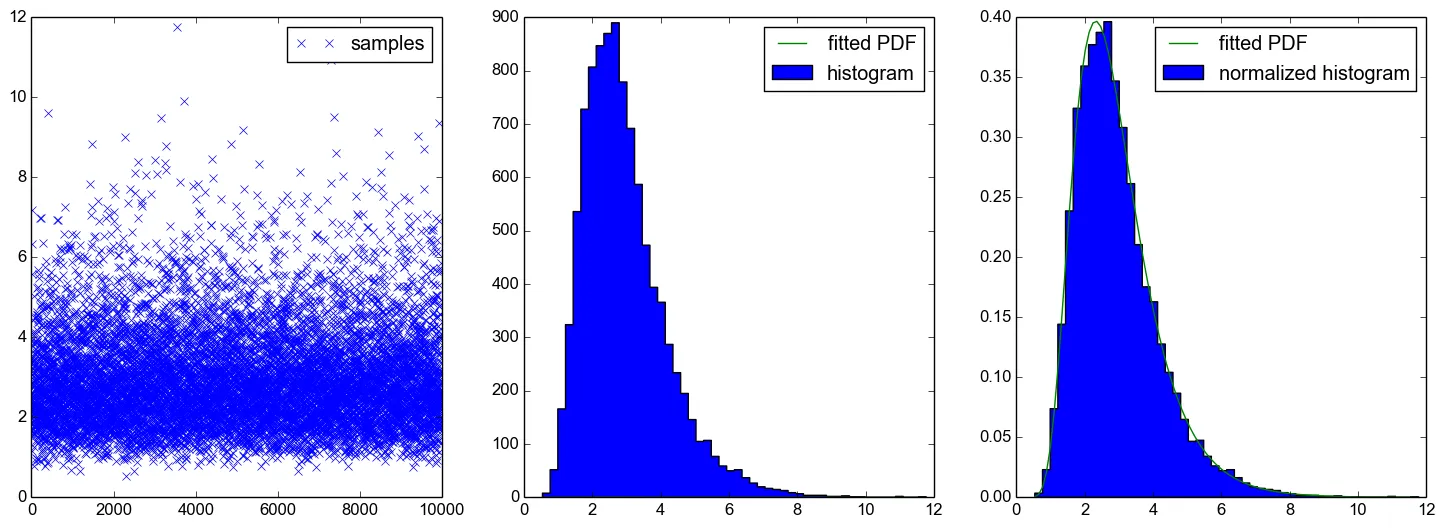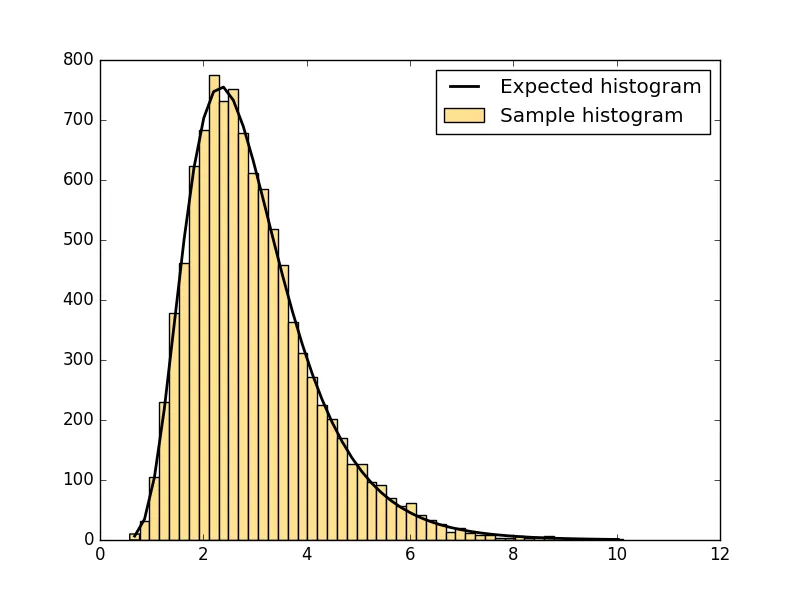我有一组服从对数正态分布的样本,并想对其进行拟合。然后我想将样本的直方图和拟合后的概率密度函数绘制在同一个图中,而且我想使用直方图的原始比例尺。
我的问题是:如何直接缩放概率密度函数,使其在直方图中可见?
以下是代码:
import numpy as np
import scipy.stats
# generate log-normal distributed set of samples
samples = np.random.lognormal( mean=1., sigma=.4, size=10000 )
# make a fit to the samples and generate the resulting PDF
shape, loc, scale = scipy.stats.lognorm.fit( samples, floc=0 )
x_fit = np.linspace( samples.min(), samples.max(), 100 )
samples_fit = scipy.stats.lognorm.pdf( x_fit, shape, loc=loc, scale=scale )
我的问题是,是否有一个参数可以轻松地将PDF缩放到直方图上(我还没有找到这个参数,但这并不意味着太多......),以使PDF在中间的图中可见?

